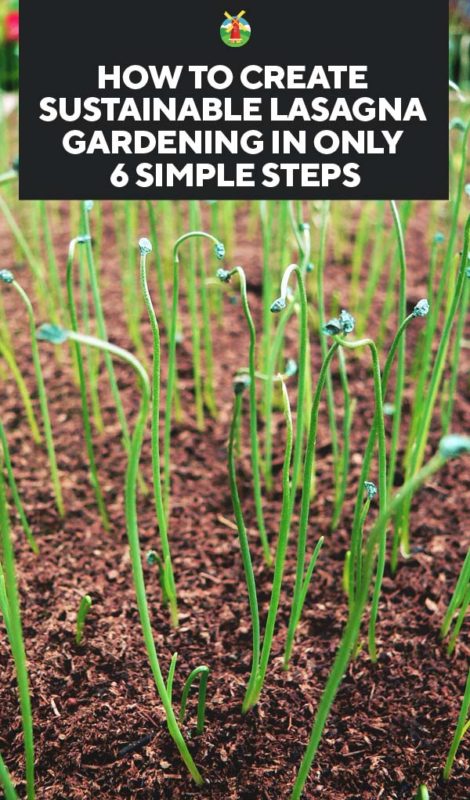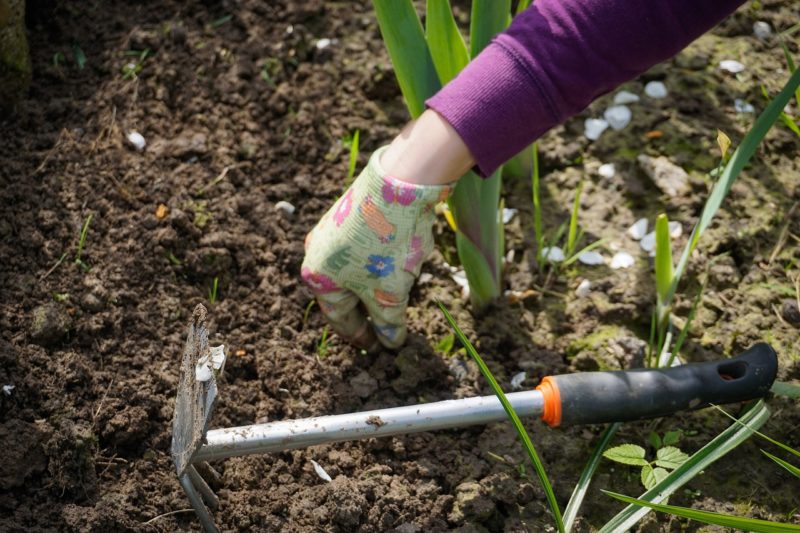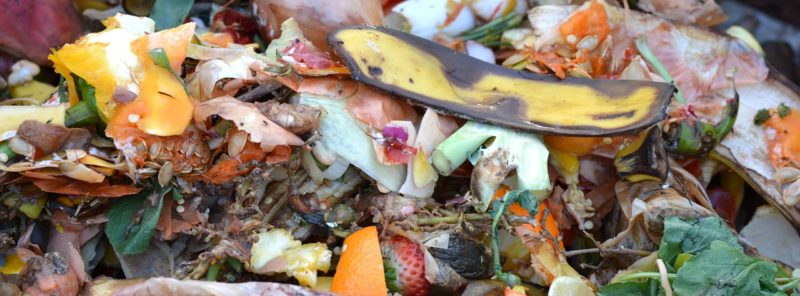Simple Lasagna Gardening And Immediate Planting
Are you tired of battling excessive weeds in your garden? Maybe you feel as though gardening is becoming excessively labor intensive for you?
What if you want an easier method of gardening all the way around?
Well, lasagna gardening could be what you've been looking for. I'm going to tell you what lasagna gardening is, how to use it in your garden, the benefits, and other tips to help you try lasagna gardening.
Here is what you need to know:

What is Lasagna Gardening?
When you first hear the term lasagna gardening, doesn't it make you hungry? It does me. I'm a huge fan of lasagna, and lasagna gardening instantly takes my mind to a place of gooey layers of cheese and vegetables filling my plate.
Sadly, lasagna gardening isn't filled with layers of delicious cheeses and marinara sauce. But it is filled with layers.
A lasagna garden is a no-till, no-dig style of gardening. You pile layers on top of other layers of organic material which gives your garden what it needs to prosper in a natural method.
How to Create Your Lasagna Garden
Like a lasagna, lasagna gardening requires many different layers to get the desired results from this process. I'm going to walk you through layer by layer to help you create the perfect lasagna garden for your home or homestead:
Layer #1:
When forming your first layer, it's important you don't upset the ground. You won't need to use the weed eater to cut down weeds or grass.
Instead, put the first layer right on top of the ground. This layer should either be a layer of cardboard or three layers of newspaper.
If the newspaper layer is thin, add more to keep weeds and grass growing through it.
Soaking this layer of the lasagna garden with water is important. Not only will this hold the sheets in place, but it will also help to jumpstart the composting process.
Keep in mind; this layer will be dark and moist. Which is great, because it'll draw worms to your garden. You want worms because they help to fluff and aerate your soil making it an ideal growing environment for your plants.
Finally, be sure you cover every inch of the growing area for your lasagna garden with this layer. The cardboard and newspaper will cause the weeds to break down and suffocate, keeping weeds out of your garden.
Layer #2:


After the first layer has been applied and soaked to start the composting process, you should add a layer of compost or manure.
Be sure the compost has already broken down before applying it. When broken down, it begins to instantly add nutrients to your garden and making a gorgeous garden soil.
After you've thoroughly covered the first layer of the lasagna garden with compost or manure, you're ready to add the next layer.
Layer #3:
Next, you'll need to add a layer of straw. Notice I said straw and not hay. Hay takes longer to break down and is sometimes filled with grass seed.
You don't want this in your lasagna garden because it'll cause grass to sprout which leads to more work for you.
Apply the straw over the manure or compost layer. It should be around one inch thick. Be sure to wet this layer thoroughly too. It should help to jumpstart the composting process.
Layer #4:
This layer is optional. The fun thing about trying out different gardening techniques is you can combine gardening methods as well.
In this case, you can add methods borrowed from hügelkultur. With this method, you can apply logs in a layer of your garden, and they act as a sponge to retain moisture.
You could do the same in your lasagna garden as an extra method in place to hold moisture for your garden.
If you do this, be sure to wet down the logs thoroughly. This will help them to break down quicker which will release necessary nutrients into the ground.
Layer #5:


This step in the process is labeled layer 5. In all actuality, you're going to add multiple layers in this step. They are going to rotate to give your garden the necessary nutrients it needs and help bring your soil to the desired brownie-like consistency.
The layer will include biodegradable items which will break down and help to form a rich compost in your garden. I will be giving you suggestions for this layer in the next section of this article.
You're going to rotate brown layers with green layers of items during this step of creating your lasagna garden. Brown layers will consist of carbon-based items such as leaves and newspapers.
They'll be followed by green layers which consist of items such as veggie scraps, grass clippings, and weeds which haven't gone to seed.
It's important for your brown layers to be two times as thick as green layers to give your garden what it needs.
Layer #6:
Your final layer in your lasagna garden should be either a layer of well-rotted compost or manure. This will give you a nice place to plant if you don't have time to let your lasagna garden break down before planting.
But it's a great way to add another layer which will help to add nutrients to the soil and retain moisture at the same time.
Keep in mind; you want your lasagna garden to be at least two feet tall. Make it taller if you can because as time progresses the layers will break down.
If the lasagna garden isn't tall enough your soil will become compacted as it breaks down. This stops aeration and can hinder drainage in your soil as well.
What to Include in Your Lasagna Garden


Lasagna gardening is all about putting the organic material around us to work. Any of the following items will work in your garden:
- Grass clippings
- Leaves
- Fruit and veggie scraps
- Coffee grounds
- Tea bags
- Weeds (which haven't gone to seed)
- Manure
- Compost
- Eggshells
- Seaweed
- Shredded paper
- Pine needles
- Pruning scraps
- Peat moss
- Other compostable items
When to Start a Lasagna Garden?
You can start a lasagna garden at any time of year. If you start your lasagna garden in the spring or summer be aware, you'll probably have to add a layer of topsoil or compost to the top of the garden.
The reason is the garden won't have time to break down, meaning you won't have as much nutrient-rich soil to plant in as you would if it had the time to decompose.
However, you can also start your lasagna garden in the fall. The fall is the ideal time because most of the items you use to create the layers in the garden are easy to access at this time.
Winter will give the garden time to break down and compost before you begin to plant in it. Also, the moisture which usually comes with winter will help to hold each layer in place and allow it to absorb moisture to water your crops in the spring.
How to Plant and Maintain a Lasagna Garden?
Planting in and maintaining a lasagna garden is easy. When you go to plant, you'll need to dig a hole for each plant.
However, be sure you dig far enough down to where you break through the cardboard or newspaper. Underneath the first layer, you should have dirt which is rich with nutrients, if the lasagna garden has had time to break down the components.
From there, you'll weed and water your garden as you would any other type of garden.
After your growing season is over, you'll need to add a layer of mulch each year. You can use materials such as:
- Straw
- Leaves
- Wood chips
- Grass clippings
Benefits of Lasagna Gardening
There are many benefits to using the lasagna gardening method. Here is what you have to look forward to if you choose to go with this method:
1. Fewer Weeds
The first layer of a lasagna garden blocks most of the weeds which would come from the ground. As long as you don't add any components to the garden which have gone to seed, you shouldn't have many weeds in your garden at all.
This is an excellent benefit because keeping weeds under control in your garden is one of the biggest challenges many gardeners face.
2. Less Water
When you grow plants in a typical soil which hasn't been amended, it won't hold much water. The earth isn't aerated.
In most cases, it's sandy. It doesn't look like a crumbling brownie when you hold it in your hand.
However, when you garden in a lasagna garden, you are creating compost. Compost has the fluffy, brownie-like consistency which is aerated and excellent at absorbing water.
When your soil holds water, you don't have to add as much water to it.
3. Less Fertilizer
Again, when you garden in a lasagna garden, you're creating compost. When you plant in compost, your soil contains the necessary nutrients your plants need.
This equates to you not having to add as much fertilizer to your plants because they're able to pull what they need from the soil.
4. Great Looking Soil
I've been bragging on the soil up to this point. With this in mind, I'll come right out and say it. When you add these ingredients to your soil, you're going to have great dirt.
Your plants will have what they need, and your garden will blossom because of it. This is a wonderful benefit to lasagna gardening.
5. Can Use It Anywhere
Finally, you can use the lasagna gardening method in any garden. If you want to plant a garden in the ground, you can clear a portion of land and build your garden using this method.
If you're someone who has physical limitations, you might prefer to garden in a raised bed. You can use the lasagna gardening method in raised beds as well.
Whatever type of gardening you prefer, the lasagna method should be able to be modified and work for you.
You now know how to create a lasagna garden, what you can use in your lasagna garden, how to plant and maintain a lasagna garden, and what the benefits of this method are.
But I'd like to hear your thoughts on this style of gardening. Do you enjoy this method? What do you think is best about it? What are the drawbacks to it, in your opinion?
Leave us your comments in the space provided below.


Simple Lasagna Gardening And Immediate Planting
Source: https://homesteadingalliance.com/how-to-create-sustainable-lasagna-gardening-in-only-6-simple-steps/
Posted by: rodriguezrecke1963.blogspot.com

0 Response to "Simple Lasagna Gardening And Immediate Planting"
Post a Comment